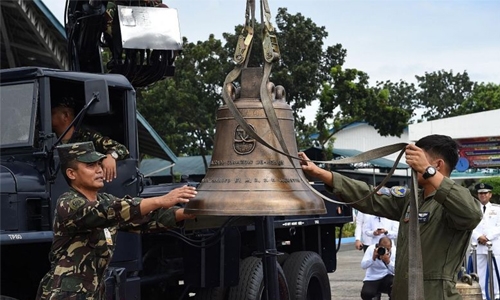US returns bells to Philippines
Church bells seized from the Philippines by US troops as war trophies over a century ago were returned on Tuesday, in a bid to turn the page on a difficult chapter between the historical allies. Giving back the three socalled Balangiga bells meets a decades-old demand from the former US colony at a time when the two nations’ ties have been rattled by President Rodrigo Duterte’s pivot to China.
“Returning these bells is the right thing to do,” US Ambassador Sung Kim said at a sober handover ceremony on a Manila airfield, where a cheer went up when the bells were pulled from wooden crates. “It is my great honour to be here at the closing of a painful chapter in our history,” he told the crowd that included people who had lobbied for years to bring the bells home. The bells will be sent back later this week to the church in the central town of Balangiga where they were looted by US soldiers avenging a surprise attack that killed 48 of their comrades on September 28, 1901.
In reprisal, the US commander Jacob Smith ordered the surrounding island of Samar be turned into a “howling wilderness”, resulting in the slaughter of thousands of Filipinos and Balangiga’s razing. The return of the bronze bells has been divisive with some US veterans and lawmakers, who see them as a tribute to fallen American troops, while the Philippines hails them as a symbol of its struggle for independence.
Two of the bells had been on display in the US state of Wyoming and the other in South Korea until being restored and flown to a Manila air base Tuesday aboard an American military cargo plane. ‘Ring again after 117 years’ “It is time for healing. It is time for closure. It is a time to look ahead as two nations should with shared history and as allies,” Philippine secretary of defence Delfin Lorenzana said.
“After 117 years the sound of the bells will once again ring,” he added. Manila’s push for the bells’ repatriation began in the 1990s and has had backing from Philippine presidents as well as from the Catholic Church and historians, but also supporters in the US.
Related Posts

